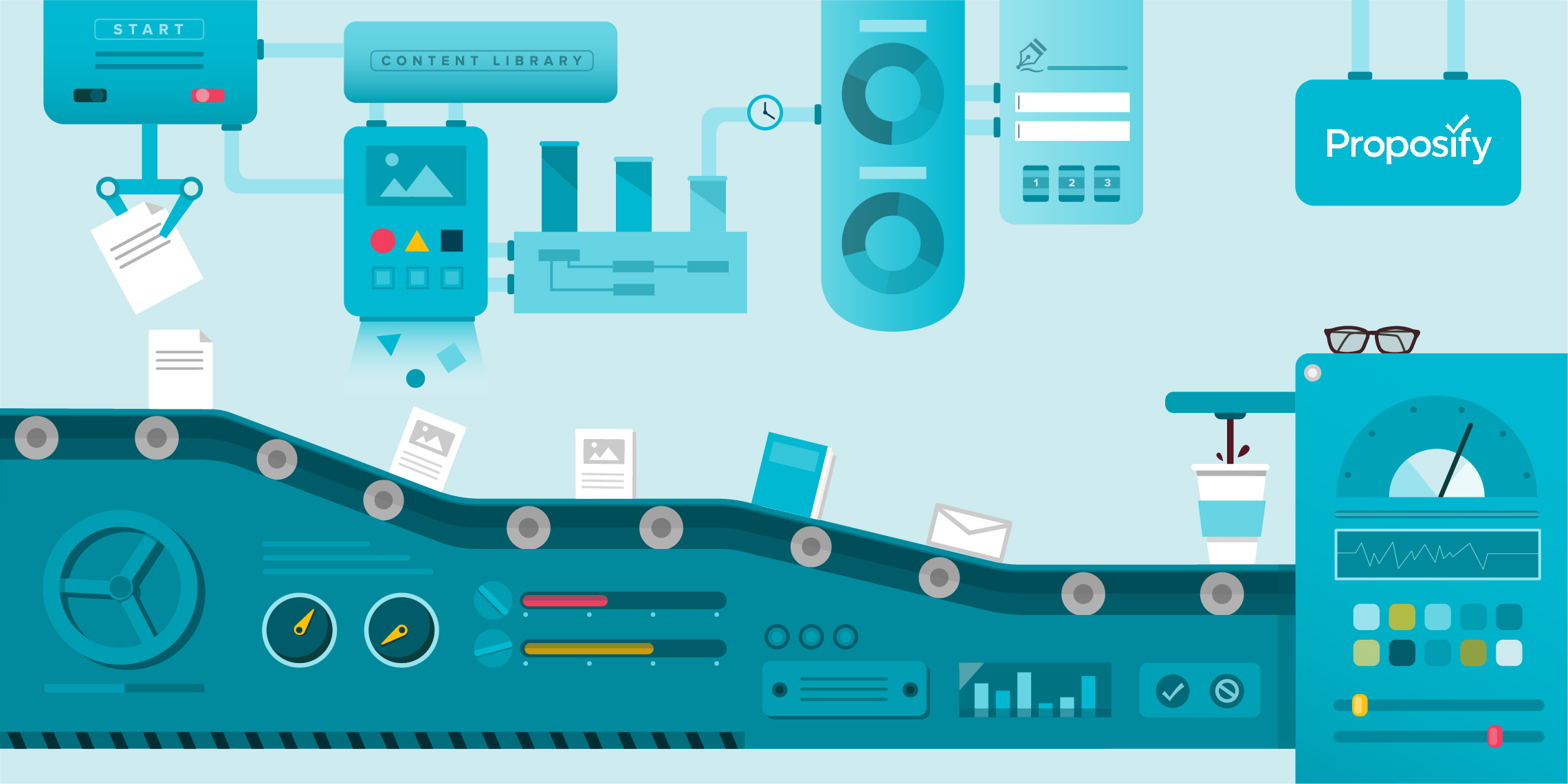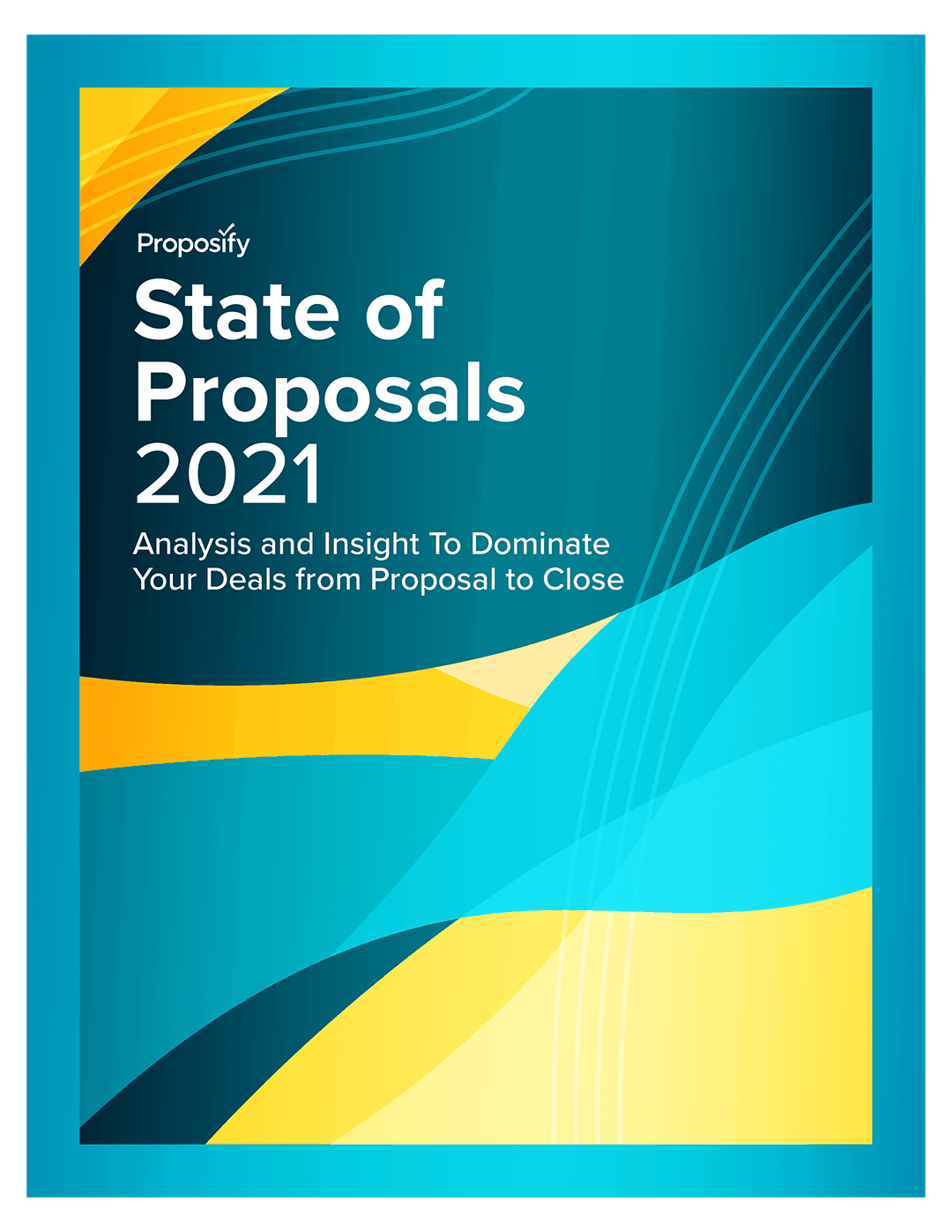Does your team’s sales doc workflow go something like this?
- Open up a blank Word doc.
- Spend an hour trying to figure out what to write.
- Give up and open up 7 other word docs you've used recently.
- Furiously copy paste from those word docs to get the right info.
- Realize, in your fury, you created a Franken-proposal that doesn't make sense.
- Spend the next 3 hours rewriting 50% of it.
- Spend an hour formatting an image that ruins the flow of your document every time you hit enter.
- Get frustrated.
- Ship it to marketing, thinking they can do it faster.
- Marketing doesn’t like the layout so they'll redo it, but it will take a week because they have other projects that are priorities.
- Worry this is taking too long for your prospect.
- Get it back from marketing.
- Looks great, but marketing completely generalized the personalization, so you need to rewrite it.
- Realize marketing did the layout in InDesign, so you have to do all edits through them.
- Get angry at marketing, because you don’t want to do this again.
- Send edits, go back and forth.
- This takes another week.
- The prospect has asked for the proposal twice already.
- Get anxious that you might lose the deal to a competitor.
- FINALLY send the prospect the PDF.
- Crickets...
- Call to realize the file size was too big, so it got caught in spam.
- Prospect asks for edits on pages 3 and 7.
- Send the edits to marketing.
- Compress the file size so it doesn’t get caught in spam again.
- Send updated PDF to prospect.
- Realize you forgot to replace a previous customer's name.
- Have a panic attack.
- Edit, export the PDF, and resend.
- Hope the prospect didn't notice.
- Prospect likes it but needs changes to pricing.
- Send pricing edits back to marketing.
- Get the PDF back, compress, send to client.
- Then wait...
- And wait...
- Has the deal gone dark?
- Wait some more.
- Lose sleep knowing you need to do this eight more times this month for a shot at hitting quota.
- Realize prospecting is on hold, and your 90-day pipeline will suffer.
- Get upset with sales leadership that they don’t see it as a problem worth fixing.
- Open up LinkedIn job search...
Daniel Hebert, Director of Sales here at Proposify, put this sad-but-all-too-true insight into the average proposal process together based on what he hears from sales teams about their workflows (or lack thereof). I know it looks ridiculous when it’s all written out like that. But some version of this “workflow” is the reality for way too many sales reps.
The whole thing is chock-full of pain points for your sales team (not to mention your marketing department and your prospects…) but it’s those last two steps that are the biggest doozies that sales leaders like you need to watch out for.
If sales docs like this proposal are still going out, you might not realize there’s a huge problem in your team’s workflow. This post will show how to streamline your sales doc workflow for maximum efficiency and sales success.
First up: what a proper workflow looks like and why you might only think your sales team has an efficient one.
What is a sales document workflow?
A sales document workflow is the process that a sales team (and other contributors and stakeholders) use to efficiently produce written and visual sales collateral.
It can be a couple of steps for a basic document or dozens for a more complex document like an RFP response. No matter the complexity level, though, it shouldn’t be chaotic.


Document workflows help keep doc creation on track, let all contributors know what to expect and when, and ensure the final version aligns with company standards, including any sign-offs or approvals.
You may be thinking, “Well, we don’t have a formal sales doc workflow but our docs still get out the door. Why should we bother putting in all this effort on a process?”
Great question.
Why should I have a simplified, formalized sales doc workflow?
The key word in the definition up there is process. If you don’t have a workflow for your document creation process, you’re basically treating each sales doc as its own mini project and using project management principles to get each one completed.
That will get documents done, sure, but what about the details? Our sales team hears the horror stories and pain points: documents go out with costly errors; money is left on the table in the scramble to get documents created fast; and sales reps over-promise and omit key details because there’s no approval process.
An efficient formal sales doc workflow is more important than ever. The volume of documents required for a closed-won deal is going up, not down. Today, more than 80% of buyers view between five and eight pieces of content from a vendor before purchasing.
But this collateral doesn’t spring fully formed out of the ether. Yeah, some of it will be your general evergreen content, like a high-level brochure. But you’ll need more and more customized sales docs, particularly if your company is moving, or plans to move, upmarket.
That means you’ll need a plan for how you’re going to create this content efficiently while maintaining quality.
A productive sales doc workflow:
- Minimizes the turnaround time to get custom sales documents in front of prospects.
- Reduces tension with other departments, like marketing, and stress for stakeholders, like subject matter experts.
- Gives all sales leaders, operations, and enablement pros insight into the process and easy avenues for approvals.
- Slashes the amount of manual work that goes into each document and protects against errors and omissions.
- Produces high-quality, customized sales docs that will impress your clients and encourage them to say yes.
Fixing a non-flowing workflow
In last week’s post, I talked about those big snags that can slow down or even stop an otherwise productive sales doc workflow in its tracks. In this post, it’s all about the smaller, but no less important, workflow inefficiencies.
Let’s use Daniel’s preposterous proposal process from above to see where it’s going off track.
In this scenario, the sales rep is using a general tool like Word that isn’t ideal for the document that they’re trying to create. There’s no dynamic template or reusable content snippets easily accessible so a lot of time is spent on editing and reformatting.
The sales rep brings in some ad-hoc reinforcements from marketing. However, their marketing counterparts don’t have a framework or details on what’s required, so the editing process drags on. Plus, the marketing person uses design software that’s not accessible to the sales rep so all edits now have to go through marketing, including any client requests.
Then they send off the PDF to the prospect with no idea what’s happening. Did they even receive it? Did it get caught in a spam filter? Have they looked at it? What about reminders?
That’s a lot of small but cumbersome issues with tools, content, editing, and sending that could cost the sales rep the deal. What would a more streamlined workflow, freed of these inefficiencies, look like? Let’s see.
Towards a better sales doc workflow
This straightforward workflow is based on some of the most efficient proposal creation workflows we’ve seen our successful customers use to get their sales teams working efficiently with our sales doc software.
Here’s how it breaks down into just eight simple steps:
Step 1: Assess prospect needs based on discovery calls, etc.
Step 2: Using needs assessment, select template, pull in snippet information, and create custom content as required.
Step 3: Send draft proposal for approval as required.
Step 4: Send proposal link to prospect.
Step 5: If not closed immediately, set a reminder to check back in within a certain timeframe.
Step 6: Prospect has questions/feedback and requests changes.
Step 7: Rep makes changes and resends.
Step 8: Prospect signs or declines the proposal.
A streamlined workflow like this puts everything at the sales rep’s fingertips.
They know what they need to create a winning proposal and can easily access tools, templates, and content to get it done quickly. Internal and client-side approvals flow from there, while the sales rep has insight into when to send a reminder or check in with the prospect and when to go for the close.
While there are no “rules” to how you set up your workflow, doing prep work like creating templates and content snippets and limiting or setting parameters for time-consuming collaboration will always make your workflow more efficient.
Conclusion
An unwieldy, 40-plus-step sales doc workflow is basically like having no workflow at all. And your sales—and sales team—will suffer for it. Protect your pipeline and your profits and your people with a simplified, but still powerful, process.



